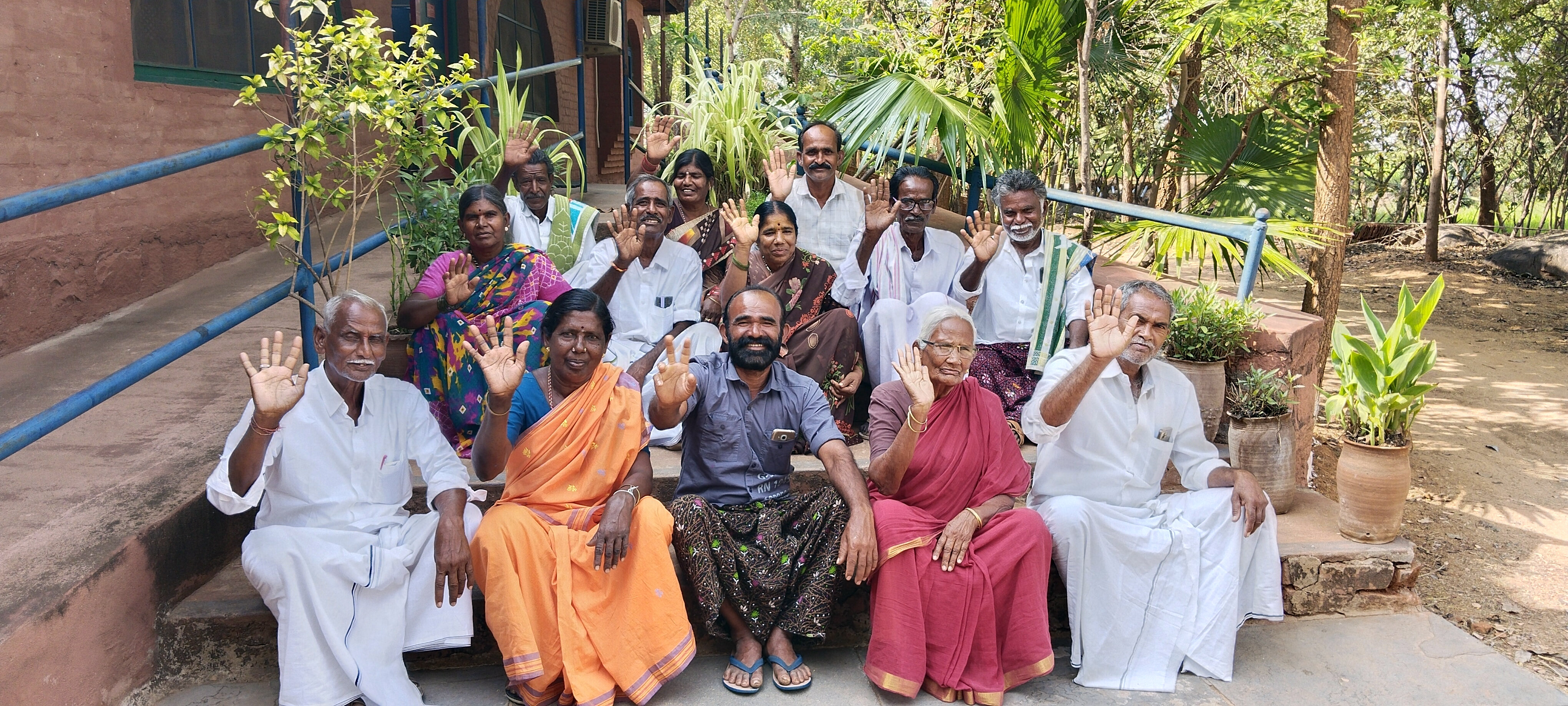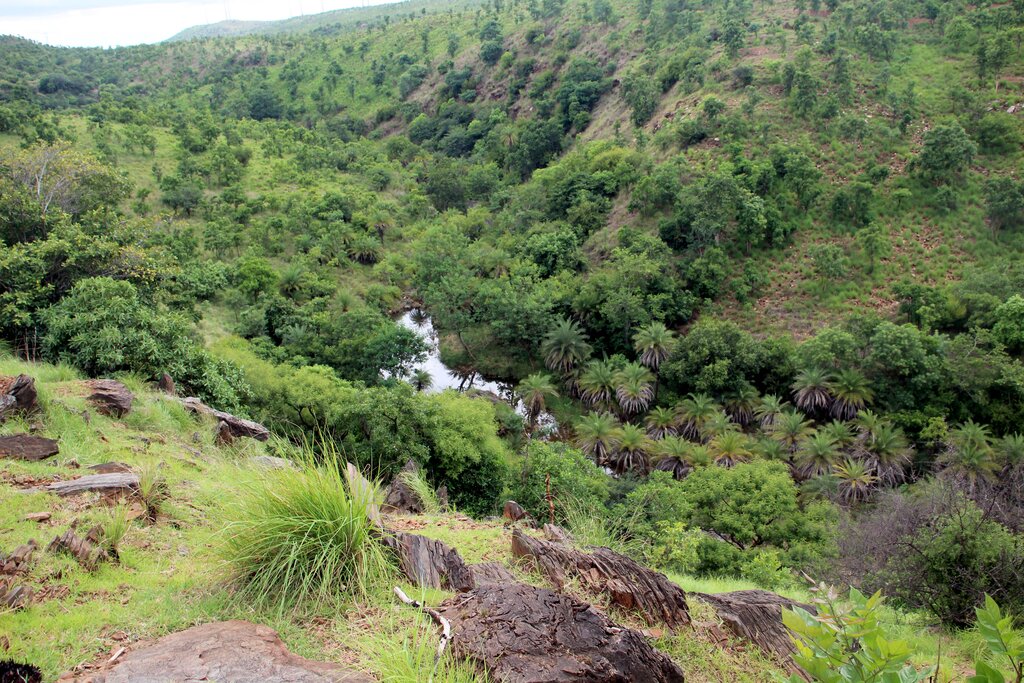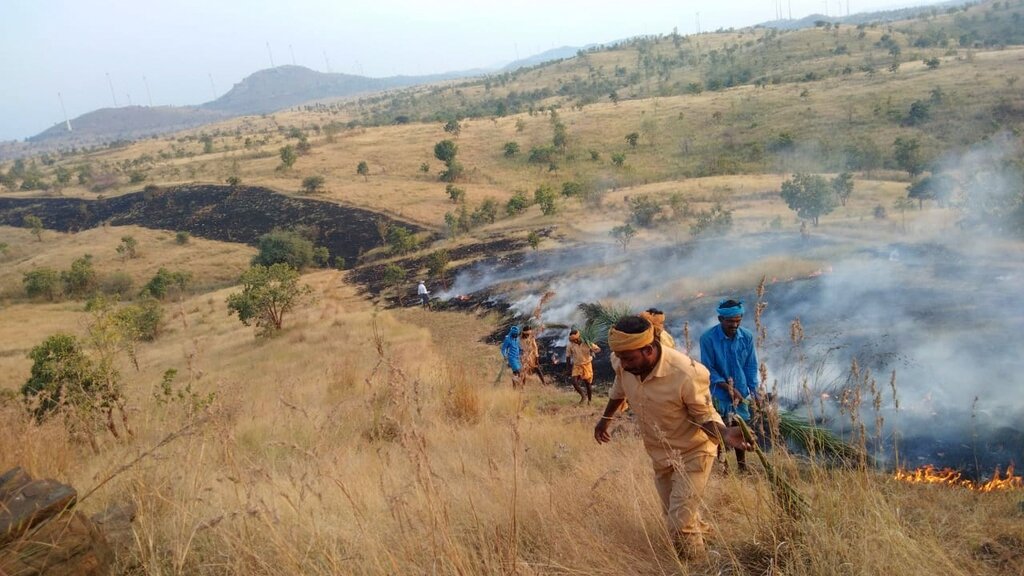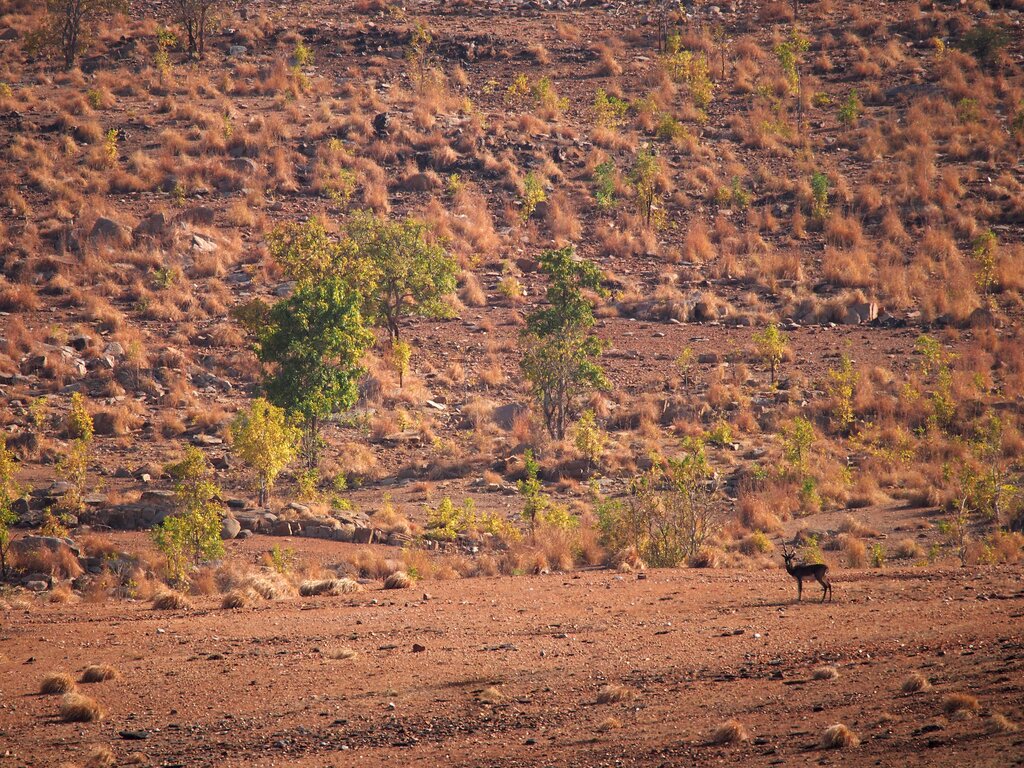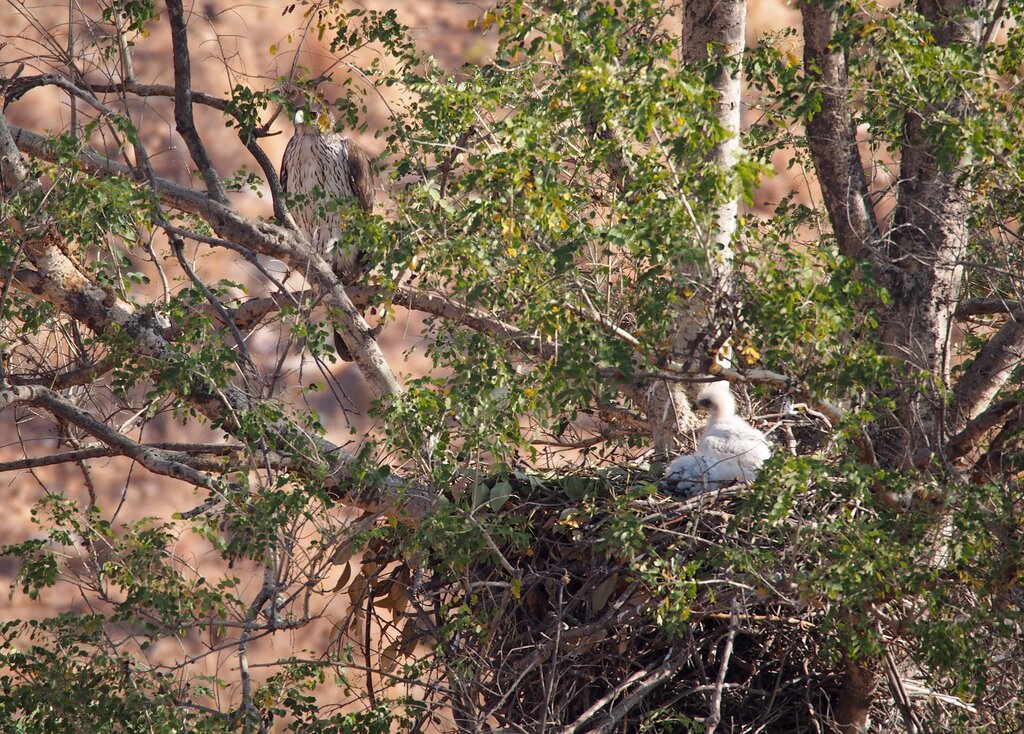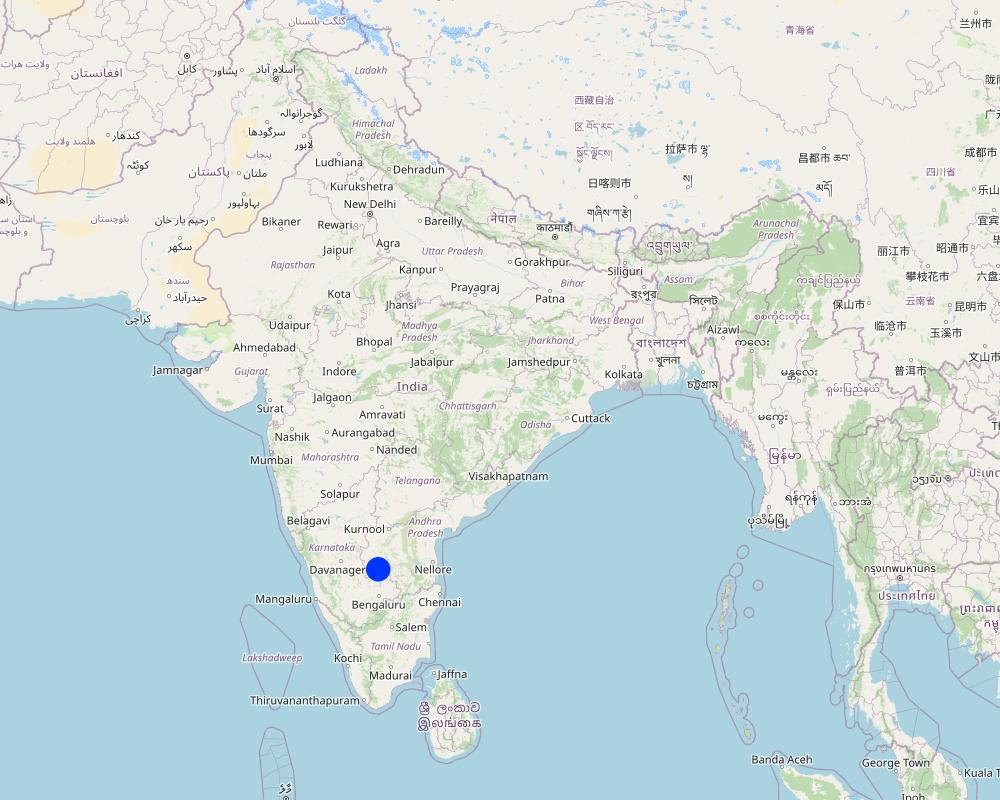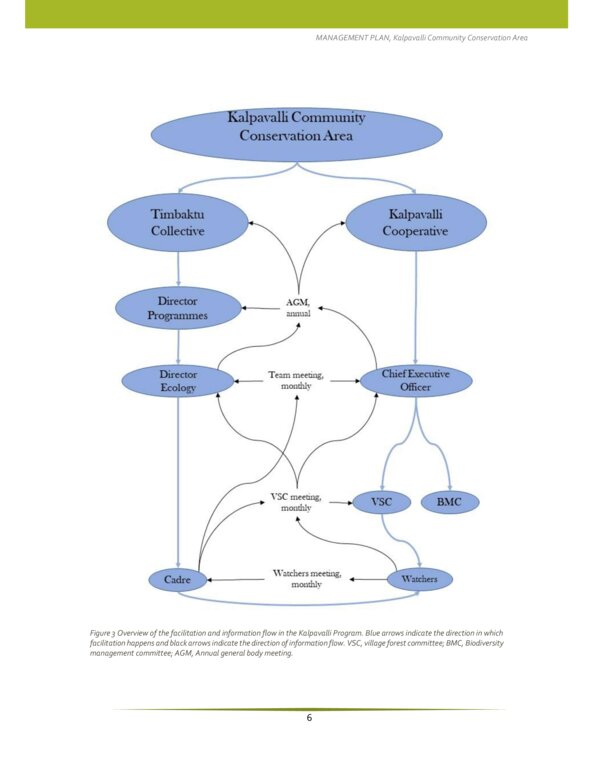Kalpavalli conservation approach: community-centred conservation of the commons [Энэтхэг ]
- Шинийг нээх:
- Шинэчлэх:
- Эмхэтгэгч: Manisha Kairaly
- Хянан тохиолдуулагч: Nicole Harari
- Хянагчид: William Critchley, Joana Eichenberger
Kalpavalli
approaches_6931 - Энэтхэг
Бүлгүүдийг үзэх
Бүгдийг дэлгэх Бүгдийг хаах1. Ерөнхий мэдээлэл
1.2 Арга барилыг баримтжуулах болон үнэлгээ хийхэд оролцсон хүн эсвэл байгууллагын холбоо барих хаяг
ГТМ мэргэжилтэн :
Ganguly Choitresh
bablu@timbaktu.org
Timbaktu Collective
Энэтхэг
ГТМ мэргэжилтэн :
Vattamattam Mary
mary@timbaktu.org
Timbaktu Collective
Энэтхэг
хамтран эмхэтгэгч:
Rao Siddharth
sidsrao@gmail.com
Adavi Trust
Энэтхэг
Арга барилыг баримтжуулах/үнэлэх ажилд дэмжлэг үзүүлсэн төслийн нэр (шаардлагатай бол)
G20 Global Land Initiative (GLI) Course (GLI Course)Арга барилыг баримтжуулах/үнэлэх ажилд дэмжлэг үзүүлсэн байгууллага(ууд)-ын нэр (шаардлагатай бол)
G20 Global Land Initiative (GLI)Арга барилыг баримтжуулах/үнэлэх ажилд дэмжлэг үзүүлсэн байгууллага(ууд)-ын нэр (шаардлагатай бол)
Arugu (Arugu) - ЭнэтхэгАрга барилыг баримтжуулах/үнэлэх ажилд дэмжлэг үзүүлсэн байгууллага(ууд)-ын нэр (шаардлагатай бол)
Adavi Trust (Adavi Trust) - Энэтхэг1.3 WOCAT-аар баримтжуулсан өгөгдлийг ашиглахтай холбоотой нөхцөл
Мэдээллийг хэзээ (газар дээр нь) цуглуулсан бэ?
06/09/2023
Эмхэтгэгч болон гол мэдээлэгч хүн(хүмүүс) WOCAT аргачлалаар баримтжуулсан мэдээллийг ашиглахтай холбоотой нөхцлийг хүлээн зөвшөөрсөн:
Тийм
2. ГТМ Арга барилын тодорхойлолт
2.1 Арга барилын товч тодорхойлолт
The Kalpavalli Community Conservation Area (KCCA) is a 6,500-acre (2,630 hectare) expanse of community-regenerated arid land located in the state of Andhra Pradesh in southern India. Over thirty years, participatory efforts have protected and restored this savannah ecosystem, with direct and indirect benefits to the community. This community-centred conservation of the commons is termed the Kalpavalli conservation approach.
2.2 Арга барилын дэлгэрэнгүй тодорхойлолт
Арга барилын дэлгэрэнгүй тодорхойлолт :
The Kalpavalli conservation approach is renowned for its focus on restoring common lands through the efforts of a cooperative society based on a federation of village forest committees. Community members are the beneficiaries. Through this approach, 6,500-acres (2,630 hectare) of arid and severely degraded common lands, have been successfully rejuvenated over the past 33 years. An NGO, Timbaktu Collective, has facilitated the conceptualisation and implementation of the approach.
The primary stakeholders are marginalized community members, including Dalits (the socially disadvantaged lowest castes), who have traditionally been landless labourers and pastoralists. Timbaktu Collective has played a critical role in community mobilization, capacity-building, training, and documentation. The approach empowered the lower castes to participate actively in the decision-making process and enabled them to advocate for benefits from government programmes. However, the lack of absolute ownership of the common lands and the potential influence of private parties with vested interests remain challenges.
The programme offers social and technical support. Details of the approach and its key focusses are as follows:
1. Social
Livelihoods: The Kalpavalli area is officially designated by the government as "wastelands", a contentious term which is applied to lands which the government does not consider economically productive. These lands are technically administrated by the State Government, but in most cases are either ignored or given to companies to establish factories or industrial estates. However, the Kalpavalli conservation approach ensures that traditional grazing and usage rights by communities are recognised. This facilitates sustainable land use centred on grazing, harvesting of non-timber forest produce, and more. The approach further promotes community management of common resources, joint responsibility for land protection, access to income generation from minor forest produce – all based on sustainable resource management.
Ownership and rights to resources: Grazing lands are largely under the technical ownership of the government, where traditional usage rights are permitted but not awarded legal status. The main challenge here is uncertainty about long-term ownership and rights to access. The approach therefore aims to secure usage, control, and ownership rights for the local community users. This is enabled through the creation of a community cooperative. The NGO and the cooperative have together been exploring various legal options to secure community ownership of the land.
Participation: The approach relies on social and technical methods, emphasizing community engagement. Social techniques include street theatre, community outings, participatory discussions, and voluntary service (“Shramadhanam”) to educate and mobilize the largely illiterate population.
Membership and monitoring: Members contribute an annual fee to access grazing and fuelwood collection. The approach includes policies for both protecting and monitoring common resources.
Organization development: Capacity-building, conflict resolution and organization management are facilitated through training and workshops.
Enterprise development: The community cooperative has launched eco-tourism initiatives to generate income, reinvesting profits into conservation efforts.
2. Technical
Restoration: The initial focus was on land protection, as common lands were degraded. In the initial years a key focus was on planting but then restoration work was modified as the land responded. Efforts have included protection from logging, creating firebreak lines, seed collection of native species, stream clearing, rotational grazing management, constructing rock-filled dams - and other watershed development work.
Protection of the commons: Stones were used to demarcate the land, and volunteer groups ("Vana Samrakshana Samithi") were established to prevent overgrazing and protect the area from uncontrolled fires.
Earthworks: Soil and water conservation measures such as rock-filled dams and earth bunds were introduced to reduce soil erosion and enhance groundwater recharge.
Research and management plans: Researchers helped map and share understanding of biodiversity. Biodiversity conservation, including both flora and fauna became a focus, with savannah ecology management plans developed.
Trees and vegetation: Initial attempts at using nurseries for propagation met with little success - and were replaced by seed broadcasting and propagation of local wild species. Seed huts were built to store seeds gather from this indigenous vegetation.
2.3 Арга барилын зурагууд
2.4 Арга барилын бичлэгүүд
Тайлбар, товч тодорхойлолт:
https://www.youtube.com/watch?v=J-VtU46p9KA
short video on the Kalpavalli Project
Зураглаачийн нэр:
Black Ticket Films
Тайлбар, товч тодорхойлолт:
https://www.youtube.com/watch?v=JZse_6PrGKg
About the conservation education work by the Timabktu Collective at the Kalpavalli Conservation Area
Зураглаачийн нэр:
Timbaktu Collective
Тайлбар, товч тодорхойлолт:
https://www.youtube.com/watch?v=l7s4VIqtpLA
A short video on the wildlife conservation work at the Kalpavalli Conservation Area
2.5 Арга барил нэвтрүүлсэн улс орон / бүс нутаг / байршил
Улс:
Энэтхэг
Улс/аймаг/сум:
Andhra Pradesh
Байршлын дэлгэрэнгүй тодорхойлолт:
Anatapuram District
Map
×2.6 Арга барилыг эхлэх, дуусах огноо
Эхлэх жилийг тэмдэглэ:
1992
Тайлбар:
Ongoing
2.7 Арга барилын төрөл
- Mixed using all three of the above
2.8 Арга барилын үндсэн зорилго, зорилтууд
Water and Soil Conservation
Community-Led Conservation
Common Land Protection
Wildlife Conservation
Livelihood Generation
Empowerment of Local Communities
2.9 Арга барилын хүрээнд хэрэгжсэн Технологи/Технологиудад дэмжсэн эсвэл саад учруулсан нөхцлүүд
нийгэм / соёл / шашны хэм хэмжээ, үнэт зүйлс
- Идэвхижүүлэх
Cultural practises such as sramadhanam (volunteering physical labour for a common goal), vanabhojanam (feasts in the forest), Sacred Groves, Kattubaatu (group decisions and social agreements that everyone decides to honour)
- Хазаарлалт
Lack of agency for women, caste system
санхүүгийн нөөц, үйлчилгээний хүртээмж / боломж
- Идэвхижүүлэх
The most important factor to note, especially as a resource, was the Timbaktu campus serving as an active ecology lab. A lot of knowledge was transferred from this site to the hills of Kalpavalli. All the technologies implemented were done with locally available skills, labour and materials. Therefore, the costs were minimal.
- Хазаарлалт
Initially it was difficult for the members to raise capital/ group savings by themselves. In light of this, the NGO fundraised small amounts to help the works undertaken, especially for wages and salaries of members. Additionally, being a low priority landscape, (these swathes of land are even called ‘wastelands’) it was difficult to raise large amounts for restoration works as it did not at that time capture the imagination of the population nor the Government.
Бүтэц зохион байгуулалт
- Идэвхижүүлэх
The different technologies of the watershed concept such as gully plugs, greening, conservation, rock filled dams water flow delay and absorption were modified and adapted to this particular landscape thanks to having an institutional setting and back up. It served as an interface to acquire the knowledge and then systematically implement it on the field.
Having the institutional setting also allowed for the technological interventions to be suggested to the Government bodies for watershed works. It also worked in the favour of the approach that institutionally as well, these were not only ideas or concepts shared but were also actively being worked on in the field, which added to its credibility.
талуудыг хамтын ажиллагаа/зохицуулалт
- Идэвхижүүлэх
The Community members (Forest Protection Committee) , the NGO, the Village level Panchayat, local Universities and the Government were all involved in these processes. If any of these actors did not cooperate then this approach would not have been possible. The larger goal of communities working towards ‘ greening’ was what largely aided this collaboration between various actors to occur
Хууль, эрхзүйн хүрээ (газар эзэмшил, газар, ус ашиглах эрх)
- Идэвхижүүлэх
The concept of ‘land use for the commons’, village common lands.
- Хазаарлалт
Technically the land belongs to the Government. So even if the community actively works and restores it, even for 3 decades, the ownership will not rest with them. Here are a few examples in how this has proved to a hindrance so far:
Land grab by private windmill companies
Green tribunal windmill case, though won, did not get payment to the community
Government granted sections of land to the Forest Department in the conservation area.
Electricity Department granted area to lay high power cables through wolf and blackbuck habitat
Бодлогууд
- Идэвхижүүлэх
That the Common lands were for use by the village and came under the Revenue Department which grants usage rights. This enabled all the works to be undertaken without any backlash from upper castes in the village.
That the Sacred Groves come under the Endowment Lands, which also aided the protection of the wild lands surrounding them.
The Village Panchayat in tandem with the BMC (Biodiversity Management Committees) are a newer body that by policy of the regional and national Government follows an International agreement on Local bodies having the onus of maintaining and protecting their local biodiversity.
NREGA – employment guarantee scheme
FFW – Food for Work scheme
Watershed Scheme by the regional Government.
- Хазаарлалт
Lack of understanding about the delicate nature of Grassland ecosystems and lesser known/ low priority landscapes
Lack of information of how these landscapes actually impact and enable livelihoods for many sections of the lower castes in the community
Demarcation of these lands as ‘waste lands’
Газрын засаглал (шийдвэр гаргах, хэрэгжүүлэх, шаардлага)
- Идэвхижүүлэх
Institution of the Forest Protection Committee as a Cooperative, creation of Community Management Plans with the help of experts, social norms such as ‘Ummadi Bhoomi’ – common land maintenance, clear roles and responsibilities of the various members of the committees.
- Хазаарлалт
Lack of legal ownership. Although the India state has a progressive Forest Rights Act, which can enable indigenous communities to gain access to traditional lands this does not apply to this region as the village members are not classified as "Tribals" as per Indian law.
Very difficult to deal with encroachments or to get the external parties to comply with the conservation area’s protection protocols.
Legitimacy of ownership is always questioned due to this factor.
ГТМ-ийн талаарх мэдлэг, техникийн дэмжлэг авах боломж
- Идэвхижүүлэх
Having the NGO to play the role of facilitator and to interface with universities and donors allowed for the knowledge systems to be more easily shared and disseminated in field.
- Хазаарлалт
Distance of the Kalpavalli area, which is very rural. Until 2011, there were no roads as well and so anyone willing to do this work and share knowledge had to be able to hike and walk large distances to see the work being done.
зах зээл (материал худалдан авах, бүтээгдэхүүн борлуулах), үнэ
- Идэвхижүүлэх
Very low market dependence and very low market orientation as well. Local markets were easy to approach for sale of seasonal produce.
ажлын багтаамж, хүн хүчний нөөц бололцоо
- Идэвхижүүлэх
Definitely enabling as for the earthworks taken up by the members of the community, they received wages from various government schemes and grants raised by the NGO Timbaktu Collective. Hardly any machines were used so the large majority of the works done served as a livelihood for the members.
Бусад
- Идэвхижүүлэх
Repetition of the various technologies, such as trenches, rock filled dams, fire lines, seed collection and dibbling and so forth allowed for these methods to become part of the inhouse knowledge. Developing these packages of practises by the community members and team have perfected these technologies and can easily implement the process on field.
3. Оролцогч талуудын оролцоо ба үүргүүд
3.1 Арга барилд оролцогч талууд болон тэдгээрийн үүргүүд
- Орон нутгийн газар ашиглагч / орон нутгийн иргэд
10 local village groups all from marginalised lower castes.
Watch and ward, land management and participatory processes.
- олон нийтэд түшиглэсэн байгууллагууд
The Kalpavalli Tree Growers Cooperative (registered name) comprising over 250 members. Also referred to as the 'Cooperative or community Cooperative' in various places in this document.
Mobilisation, management and participatory processes.
- ГТМ-ийн мэргэжилтэн/ хөдөө аж ахуйн зөвлөх
Researchers, academics and university groups.
SLM technologies, trainings, data collection.
- Судлаачид
inhouse and external ecologists and social scientists
documentation and SLM
- ТББ
The timbaktu collective
ideation, catalyst, implementation, technical, administrative, financial and logistical support.
- Орон нутгийн захиргаа
Local Panchyath, District Collector, Block Education officer
legal owners of land, facilitate education and help with conflict management.
- Олон улсын байгууллага
Interntional donor agencies
funding, monitoring and evaluation.
3.2 Арга барилын янз бүрийн үе шатанд орон нутгийн газар ашиглагчид / бүлэглэлүүдийг татан оролцуулах
| Орон нутгийн газар ашиглагч / орон нутгийн иргэдийн оролцоо | Хэн оролцсоныг тодорхойлж, үйл ажиллагааг тайлбарлана уу | |
|---|---|---|
| санаачлага/идэвхжүүлэлт | интерактив | Village community members as well as the NGO team came together to understand land degradation and its impacts on the community. They started working on the watershed to conserve water. |
| Төлөвлөгөө | интерактив | The community and NGO planned activities such as tree planting, grass seed dibbling, fire management. They collectively mobilised volunteers for this. |
| Хэрэгжилт | интерактив | The community members and NGO partnered to implement all restoration work from the beginning of the project. They created a cooperative dedicated to the restoration of the selected common lands, hired the required labor as well as contributed voluntarily to the restoration activities. These are ongoing till date, including planting, protection, critical watering, fire and grazing management. |
| Мониторинг/ үнэлгээ | интерактив | Daily monitoring of the commons is undertaken by the community watchers and community members work alongside any researchers who are monitoring or collecting data. |
| Research | интерактив | All research is discussed in advance with the community directors and community watchers are part of the data collection process. research results are shared with the community. |
3.3 Диаграм (хэрэв боломжтой бол)
Тодорхойлолт :
Overview of the facilitation and information flow in the Kalpavalli Programme, excerpt from the Kalpavalli Management Plan
Зохиогч :
Sreenivasan & Rao
3.4 ГТМ-ийн технологи/технологиуд сонгох шийдвэр
Хэрэгжүүлэх Технологи/Технологиудын сонголтыг хийж шийдвэр гаргасан хүнийг тодорхойлно уу:
- оролцооны зарчмын хэсэг болох бүх холбогдох талууд
Шийдвэрийг юунд үндэслэн гаргасан:
- Хувь хүний туршлага ба санал бодол (баримтжуулаагүй)
4. Техникийн дэмжлэг, чадавхи бүрдүүлэх, мэдлэгийн менежмент
4.1 Чадавхи бэхжүүлэх/сургалт
Газар эзэмшигчид / бусад оролцогч талуудад сургалт явуулсан уу?
Тийм
Хэн сургалтанд хамрагдсан бэ:
- Газар ашиглагчид
- хээрийн ажилтан / зөвлөх
Сургалтын хэлбэр :
- Ажил дээр
- фермерээс -фермер
- үзүүлэнгийн талбай
- Олон нийтийн уулзалт
- курс дамжаа
Хамрагдсан сэвдүүд:
Seed preservation and collection, grassland and rangeland management and ecology, wildlife conservation, bird watching, aquatic ecology, human-wildlife conflict, GIS basics, ecotourism, gender training, evolutionary biology.
4.2 Зөвлөх үйлчилгээ
Газар ашиглагчдад зөвлөх үйлчилгээ авах боломжтой байдаг уу?
Тийм
Зөвлөх үйлчилгээ үзүүлсэн эсэхийг тогтоо:
- Газар ашиглагчийн талбай дээр
- Тогтмол төвд
Тодорхойлолт / тайлбар:
The NGO Timbaktu Collective makes coordinates and links the land users to specific expertise and advisor services as and when requested or required. this includes universities, other NGOS, researchers and government officials.
4.3 Институцийг бэхжүүлэх (байгууллагын хөгжил)
Арга барилаар дамжуулан институц байгуулагдаж эсвэл бэхжсэн үү?
- Тийм, маш их
Байгууллагууд бэхжиж, үүсэн бий болсон түвшин(үүд)-г тодорхойлно уу:
- Орон нутгийн
Байгууллага, үүрэг, хариуцлага, гишүүд гэх мэтийг тайлбарлах:
The Kalpavalli area is managed by the Kalpavalli Tree Grower’s Cooperative Society which is a federation of 10 Vana Samrakshana (Forest Protection) Committees. Their primary role is the decentralized management of their common lands.
The VSCs and the Cooperative were established by the Timbaktu Collective, under the Andhra Pradesh State "Mutually Aided-Cooperative Act" to create participatory decision making processes in the villages for the common lands. The VSCs partner with the Timbaktu Collective for technical, administrative, financial and logistical requirements while they continue to function independently and in parallel to the local Biodiversity Management Committees (BMC). The BMC's are in essence the same members as the VSC, the difference is that the BMC are legal entities under the Biological Diversity Act of the central government. This was an act passed only in 2002. The NGO Timbaktu Collective has been finding different strategies to strengthen village institutions based on available laws. The Cooperative monitors the use of the Kalpavalli forests through its Watch and Ward policy. This encompasses field level forest watchers appointed by the VSCs and entrusted with the responsibility of overseeing a specific area. The forest Watchers undertake patrolling, monitor forest activities, seasonal NTFP collection and collaborate extensively with the NGO team members.
Дэмжлэгийн төрлийг ялга:
- Санхүүгийн
- чадавхи бэхжүүлэх / сургалт
- Тоног төхөөрөмж
4.4 Мониторинг ба үнэлгээ
Мониторинг болон үнэлгээ нь арга барилын хэсэг үү?
Тийм
Тайлбар:
There are internal and external processes to monitor and evaluate the project. The internal ones are, weekly, monthly and yearly team reviews by the Timbaktu Collective. The Coopertive Directors Meet every month to review progress and strategies. The timbaktu collective also organises for periodic monitoring and evaluation from external consultants on a case-by-case basis. External mentoring and evaluation is largely done by funding agencies on a yearly basis.
Хэрэв тийм бол энэ баримт бичиг нь мониторинг, үнэлгээнд ашиглагдахаар зориулагдсан уу?
Тийм
Тайлбар:
This document will serve as a reference for the NGO and the cooperative as well as help document their work.
4.5 Судалгаа
Судалгаа арга барилын хэсэг нь байсан уу?
Тийм
Сэдвийг тодруулна уу:
- Социологи
- Эдийн засаг/ зах зээл
- Экологи
Дэлгэрэнгүй мэдээллийг өгч, хэн судалгаа явуулсныг бичнэ үү:
From the year 2008, several formal research projects were taken up in the Kalpavalli area. One of the first was to do a physical walk along with marked locations along the BURUJULU (boundary markings) in order to make a GPS map. Post that, in 2013 there was a Biodiversity assessment done for both flora and fauna. Soon after a Wolf and Vulture questionnaire was carried out among land users and other community members to understand villager’s mindsets towards these two threatened species. The findings, along with other smaller questionnaires were compiled into another research study and report that outlined a Management Plan for the Kalpavalli Cooperative. Fauna specific research with camera trapping and field notes allowed Researchers to establish Kalpavalli as a critical habitat and corridor, especially for the vulnerable Indian Grey Wolf.
Most of the research over the years was carried out by Independent Ecologists and Wildlife Biologists. Mr. Siddharth Rao, Naren Sreenivasan, Gautham Gollapalli and Joseph Vattakaaven are among the researchers who have done extensive work on the Kalpavalli approach.
5. Санхүүгийн болон гадаад материаллаг дэмжлэг
5.1 ГТМ-ийн Арга барилын бүрэлдэхүүн хэсгийн жилийн төсөв
Хэрэв жилийн төсөв тодорхойгүй бол хягаарыг тодруулна уу:
- 10,000-100,000
Тайлбар (жнь: санхүүжилтийн гол эх үүсвэр / гол хандивлагчид):
The NGO was and is funded by various donor agencies (international and national) a well as philanthropists. All funding information is published annually on www.timbuktu.org. With respect to Nrega and FFW the NGO served as the implementing agency chosen by the government. This was completed in the 2000s.
5.2 Газар ашиглагчдад санхүүгийн / материаллаг дэмжлэг үзүүлсэн
Технологи / технологийг хэрэгжүүлэхэд газар ашиглагчид санхүүгийн / материаллаг дэмжлэг авсан уу?
Тийм
Хэрэв тийм бол дэмжлэгийн төрөл(үүд), нөхцөл, болон нийлүүлэгч(чид) бичнэ үү:
The NGO Timbaktu Collective has raised grants to support salaries for watch and ward, holding meetings, purchasing equipment and other logistical support.
5.3 Тодорхой зардлыг даахад чиглэсэн дэмжлэгт (хөдөлмөрийн хүчийг оролцуулаад)
- Ажил хөдөлмөр
| Ямар талбайн хэмжээнд | Тэтгэмж, урамшууллыг тодорхойлно уу |
|---|---|
| хэсэгчлэн санхүүждэг | NREGA and Food For Work Programmes |
Хэрэв газар ашиглагчийн хөдөлмөрийн хүч чухал байсан бол энэ нь аль хэлбэр байсан:
- сайн дурын
Тайлбар:
In the intial years most labour was volluntary, which then moved to paid labour and some voluntary commitments from the community.
5.4 Кредит
Арга барилын хүрээнд ГТМ-ийн үйл ажиллагаанд зориулж зээлд хамрагдсан уу?
Үгүй
5.5 Бусад урамшуулал, хэрэгсэл
ГТМ-ийн технологийг хэрэгжилтийг дэмжихэд ашигласан бусад урамшуулал, хэрэгсэл байсан уу?
Тийм
Хэрэв тийм бол, тодруулна уу:
The NREGA Act and The Food for work Government programme
6. Нөлөөллийн дүн шинжилгээ ба дүгнэлт
6.1 Арга барилын нөлөөллүүд
Арга барил нь орон нутгийн газар ашиглагчдыг чадваржуулах, оролцогч талуудын оролцоог сайжруулсан уу?
- Үгүй
- Тийм, бага зэрэг
- Тийм, зарим
- Тийм, их
Prior to the approach, these specific communities and castes were not involved in discussions or decisions based in and around their villages. Over the years, the land users feel all decisions regarding their common resources such as fodder, thatch grass, streams and waterways were all made in a participatory fashion, and led by the lower caste members.
Арга барил нь нотолгоонд суурилсан шийдвэр гаргах боломж олгосон уу?
- Үгүй
- Тийм, бага зэрэг
- Тийм, зарим
- Тийм, их
Yes. This was because of seeing the effects of various technologies taking shape on the landscape and then slowly increasing the area of the Commons that were added to be protected and nurtured. Photo documentation helped monitor and share results to make it easier to implement more evidence based decision making possible, especially for the illiterate community members. Researchers documenting and collecting data has helped this process.
Арга барил нь ГТМ-ийн технологийг хэрэгжүүлж, хадгалахад газар ашиглагчдад тусласан уу?
- Үгүй
- Тийм, бага зэрэг
- Тийм, зарим
- Тийм, их
Yes. Having the support of the NGO team members to help oversee and propagate technologies allowed for more village groups to get involved in healing the lands closest to their area. This had various impacts such as mobilizing the community as well maintaining all records for any incentive-based work to be immediately reimbursed. This built trust as well to maintain the SLM technologies once implemented.
Арга барил нь ГТМ-ийн зардал хэмнэсэн хэрэгжилт, зохицуулалтыг сайжруулсан уу?
- Үгүй
- Тийм, бага зэрэг
- Тийм, зарим
- Тийм, их
Definitely. Having a strategic approach to the technologies meant that existing social norms and cultures were used in a participatory way. Examples are shramadaanam (voluntary work for a specific goal such as making making fire lines), desilting waterbodies in the dry season, putting out fires using existing techniques such as green palm fronds etc. If these methodologies were not used in a resourceful manner, all the technologies would have proved much more expensive to implement in field.
Арга барил нь ГТМ-ийн хэрэгжилтийн санхүүгийн эх үүсвэрийн хүртээмжийг сайжруулах / эргэлтэнд оруулахад чиглэсэн үү?
- Үгүй
- Тийм, бага зэрэг
- Тийм, зарим
- Тийм, их
Prior to the approach, this land area was degraded and unmanaged for any returns, tangible and intangible. By starting the initial village groups, members put together small savings to carry out certain activities while the NGO also raised funds for the same. This process greatly helped to initiate and then continue to mobilize financial resources. Currently, the Eco tourism model also follows the same ideology of mobilizing funds for SLM in the area.
Арга барил нь ГТМ хэрэгжүүлэхэд газар ашиглагчдын мэдлэг, чадварыг сайжруулахад хүргэсэн үү?
- Үгүй
- Тийм, бага зэрэг
- Тийм, зарим
- Тийм, их
Yes definitely. Building on a few existing technologies, the SLMs introduced were simple, practical and enabled community members to easily join in the process.
Энэ арга барил бусад сонирхогч талуудын мэдлэг, чадавхийг сайжруулсан уу?
- Үгүй
- Тийм, бага зэрэг
- Тийм, зарим
- Тийм, их
Village members who are not part of these committees were also impacted by these activities as awareness grew about restoration practises and methods to aid the process.
Арга барил нь оролцогч талуудын хооронд институци, хамтын ажиллагааг бий болгож, бэхжүүлсэн үү?
- Үгүй
- Тийм, бага зэрэг
- Тийм, зарим
- Тийм, их
Yes definitely. The Cooperative approach intrinsically is a people led structure that is open to sharing knowledge and involving others in processes. The community, NGO, Government as well as other stakeholders such as migratory pastoralists, research organizations, farmer cooperatives, Cooperative of People with disabilities and local Government school children are all stakeholders with whom collaboration has been initiated and strengthened.
Энэ арга барил зөрчилдөөнийг багасгасан уу?
- Үгүй
- Тийм, бага зэрэг
- Тийм, зарим
- Тийм, их
Significantly. In the initial years conflicts arose between villages over shared resources such as fodder and thatch grass. These were resolved by interventions from the NGO members. In later years, conflicts with windmill owners, private quarry owners, political parties looking to grab land were all dealt with in a peaceful manner with dialogue and exerting land use rights at the fore.
Арга барил нь эмзэг бүлгийнхнийг нийгэм, эдийн засгийн хувьд чадавхижуулсан уу?
- Үгүй
- Тийм, бага зэрэг
- Тийм, зарим
- Тийм, их
Yes significantly. Kalpavalli works in 10 villages and in these villages with the most socially and economically marginalized communities. The Village members as well as traditional migratory pastoralists make regular income as well as livelihood supports thanks to this approach. The land users feel that this approach has had both immediate as well as long term benefits for socially and economically backward groups.
Арга барил нь жендэрийн тэгш байдлыг сайжруулж, эмэгтэйчүүд, охидыг чадавхжуулсан уу?
- Үгүй
- Тийм, бага зэрэг
- Тийм, зарим
- Тийм, их
In the initial years, men were reluctant to have women join the discussions in the ‘male dominated’ areas of the village where meetings usually took place. Women too were hesitant to participate in these gatherings. However, they were encouraged to join in, especially as they were the ones doing rounds to collect firewood and fodder for the homestead. Slowly, they got involved and today play an important role in the leadership. However, daily patrol, watch and ward work is not undertaken by them due to safety concerns. School girls were encouraged to join day long SLM activities such as seed broadcasting and collection which was absolutely not common before. Some members pointed out that gender equality trainings by the NGO opened their eyes to shared leadership and responsibility of the commons.
Арга барил нь газар ашиглагч залуучууд / дараагийн үеийн хүмүүсийг ГТМ-д оролцохыг хөхүүлэн дэмжсэн үү?
- Үгүй
- Тийм, бага зэрэг
- Тийм, зарим
- Тийм, их
Many members encourage their children to attend the camps and awareness workshops that the Ngo organize. The focus of these is on grassland biodiversity and ecosystems along with fun games, activities and cultural dances and songs that celebrate nature. These training camps has had several hundred children and youth attend and has fostered a strong connection with their wild and common lands
Арга барил нь ГТМ-ийн технологийг хэрэгжүүлэхэд саад учруулсан газрын эзэмшил / ашиглах эрхийг сайжруулахад чиглэсэн үү?
- Үгүй
- Тийм, бага зэрэг
- Тийм, зарим
- Тийм, их
Land tenure was not impacted but user rights were strongly bolstered. Community members never undertook measures to heal the land while it was just listed as the Commons. Since this approach, the fact that the land was restored and proved to become a massive resource for the community definitely improved user rights. As for tenure, it still comes under the Government.
Арга барил нь чанаржуулсан шим тэжээл/ хүнсний аюулгүй байдалд хүргэсэн үү?
- Үгүй
- Тийм, бага зэрэг
- Тийм, зарим
- Тийм, их
Community members interviewed for this case study pointed out two distinct ways in which the approach has led to food security. One is that the protection and management of the streams and the check-dams has ensured that the watershed works well every monsoon with sufficient water collection in the big lakes downstream. The water from here is used by the farming community to grow a variety of greens and vegetables that are then mostly sold locally in the village itself. The other factor they pointed out was that abundance of fodder for small ruminants has ensured that meat consumption, especially of free-range goat and sheep mutton has been possible thanks to this approach. In other villages, pooer sections of the community have no other protein source than to buy cheaper farmed ‘broiler chicken’ meat, which is weak in nutrition and pumped with a lot of steroids and antibiotics.
Арга барил нь зах зээлийн хүртээмжийг сайжруулсан уу?
- Үгүй
- Тийм, бага зэрэг
- Тийм, зарим
- Тийм, их
In this regards, the traditional market access for NTFP was strengthened. Livelihoods from seasonal broom grass collection, thatch grass, palm fronds for mats and basket weaving, wild berries and various flora for ethno- veterinary preparations have all been helped. The collection and sale of these have certainly increased the access to markets for these sections of the community, especially women from the lower castes. Additionally, market-based solutions such as an eco-tourism venture withing the conservation area is up and running. This provides revenue to the Coopertive from tourist who visit the restoration site. All this work in relation to markets has been led by the Timbaktu Collective.
Арга барил нь ус, ариун цэврийн байгууламжийн хүртээмжийг сайжруулахад хүргэсэн үү?
- Үгүй
- Тийм, бага зэрэг
- Тийм, зарим
- Тийм, их
Access to water yes. Sanitation not necessarily as that comes under the management of the Municipality of the local government bodies. The SLMs in the approach have had a massive impact on consistent water levels in the entire watershed as well as recharging the underground aquifers.
Арга барил нь эрчим хүчний эх үүсвэр/ илүү тогтвортой ашиглалтад хүргэх үү?
- Үгүй
- Тийм, бага зэрэг
- Тийм, зарим
- Тийм, их
As a lot of the SLMs were taken from the Timbaktu handbook, solar powered spaces were a big take away. All infrastructure in the Kalpavalli area is solar powered
From the second year onwards, the community could depend on the Kalpavalli restoration for fodder for the huge populations of small ruminants in the area as well as cattle. Extreme heat and drought years have seen this area still have fodder grass and perennial streams that are a life saver for pastoralists. Community members engaged with hands on work in the grasslands are definitely better equipped to deal with weather extremes and changes as their tactics to deal with them are in house solutions, usually very low cost and easy to maintain
Community members who work in the conservation area as Watchers, Guards, Ethno vet produce collectors and Eco tourism staff have all gained employment through this approach. There are also numerous village members who have seasonal income from NTFPs as mentioned in the earlier sections. Since its inception and over the years, the approach made use of several policies as well as funding opportunities to create ‘labour days’ for community members. For the lower caste members, especially the manual labourers who do not own land, this was a win-win situation as it generated monetary security while systematically improving their common lands.
6.2 ГТМ-ийг хэрэгжүүлэх газар ашиглагчидын гол санаачилга
- үйлдвэрлэл нэмэгдсэн
- Ашиг нэмэгдсэн (боломж), зардал-үр ашгийн харьцаа сайжирсан
- Газрын доройтол буурсан
- Гамшигийн эрсдэл буурсан
- төлбөр / татаас
- нэр хүнд, нийгмийн дарамт / нийгмийн холбоо
- Сүлжээ/ бүлэг төсөл/ хөдөлгөөнд гишүүнээр элсүүлэх
- Байгаль орчны ухамсар
- зан заншил, ёс суртахуун
- ГТМ-ийн мэдлэг, туршлага дээшилсэн
- гоо зүйн сайжруулалт
- зөрчилдөөнийг бууруулах
6.3 Арга барилын үйл ажиллагааны тогтвортой байдал
Газар ашиглагчид арга барилаар дамжуулан хэрэгжүүлсэн арга хэмжээг тогтвортой хадгалж чадах уу (гадны дэмжлэггүйгээр)?
- Тодорхойгүй
Хэрэв үгүй эсвэл тодорхойгүй бол дэлгэрэнгүй тайлбар өгнө үү:
If no or uncertain, specify and comment: The initiation of the Kalpavalli approach was through the NGO Timbaktu Collective. Though the Forest Cooperative has developed very strong social fibre and management of the Commons, this work and its longevity remains uncertain mainly due to the fact that the ownerships aspect rest with the Government. Policy might dictate changes in land usage rights or perhaps move the conservation area under the Forest Department which has a whole other set of fines, regulations as opposed to the ease of use of the Commons.
6.4 Арга барилын тогтвортой/давуу тал/боломжууд
| Газар ашиглагчдын тодорхойлсон давуу тал/боломжууд |
|---|
| livelihood generation |
| participatory approaches |
| A sense of ownership and purpose in the community members towards the land |
| Hope and optimism - from seeing forest hand what collective actions on degraded lands can turn into |
| Эмхэтгэгч, бусад мэдээлэл өгсөн хүмүүсийн өнцгөөс тодорхойлсон давуу тал/боломжууд |
|---|
| Practical approaches with direct benefits |
| Low cost and highly reliable interventions |
| Ownership and community moblization by members playing an active role |
| A local NGO collaborating with the community for a globally relevant body of work. |
6.5 Арга барилын дутагдалтай/сул тал/аюул болон тэдгээрийн хэрхэн даван туулах арга замууд
| Газар ашиглагч нарын тодорхойлсон сул тал/ дутагдал/ эрсдэл | Тэдгээрийг хэрхэн даван туулах вэ? |
|---|---|
| Legal ownership not in their favour | Government granting special status for land management to the Community based organization |
| Not having a significant immediate economic return | Further RnD and enterprise development |
| Эмхэтгэгч, бусад мэдээлэл өгсөн хүмүүсийн өнцгөөс тодорхойлсон сул тал/ дутагдал/ эрсдэл | Тэдгээрийг хэрхэн даван туулах вэ? |
|---|---|
| Land ownership and tenure not with community | First and foremost would be a legal agreement granting Management Rights to the Federation by the Government which would help the community protect their commons from other private agencies, political parties and encroachment. |
| Not having a significant immediate economic return for the community members apart from the wages and now more recently the Eco tourism venture. There is a concern that the next generations would not be as enthusiastic without having significant economic returns. | Establishing more revenue generating streams within the approach. There are steps being made to launch more enterprises such as a native flora nursery and products such as ethno-vet preparations. |
7. Суурь мэдээлэл болон холбоосууд
7.1 Мэдээллийн эх үүсвэр/аргууд
- Хээрийн уулзалт, судалгаа
Six field visits, 10 informants
- Газар ашиглагчтай хийсэн ярилцлага
112 Land users interviewed
- ГТМ-ийн мэргэжилтэн/шинжээчтэй хийсэн ярилцлага
6 experts
- тайлан болон бусад эх сурвалжийн бүрдэл
Kalpavalli Management plan, Timbaktu Collective Annual Reports, Kalpavalli Coopertive Annual Report, Kalpavalli Field guide
7.2 Холбогдох бүтээлийн ишлэл
Гарчиг, зохиогч, он, ISBN:
Timbaktu Collective annual Report
Хаанаас авч болох вэ? Зардал?
Online on the NGO website, www.timbaktu.org
Гарчиг, зохиогч, он, ISBN:
Kalpavalli Management Plan, Rao, Sreenivasan 2018
Хаанаас авч болох вэ? Зардал?
internal document
Гарчиг, зохиогч, он, ISBN:
Biodiversity Report, Rao, Sreenivasan 2014
Хаанаас авч болох вэ? Зардал?
internal document
7.3 Холбогдох мэдээллийн интернет дэх нээлттэй холбоосууд
Гарчиг/ тодорхойлолт:
Making a pig’s ear of it - The Hindu BusinessLine
URL:
https://www.thehindubusinessline.com/blink/cover/Making-a-pig%E2%80%99s-ear-of-it/article20874649.ece
Гарчиг/ тодорхойлолт:
Conservation And The Commons | Nature inFocus
URL:
https://www.natureinfocus.in/the-restoration-notebook/conservation-and-the-commons
Гарчиг/ тодорхойлолт:
The soil has veins - Vikalp Sangam
URL:
https://vikalpsangam.org/article/the-soil-has-veins/
Гарчиг/ тодорхойлолт:
The Kalpavalli programme and the Kalpavalli Conservation Area – Equator Initiative
URL:
https://www.equatorinitiative.org/2017/06/05/the-kalpavalli-programme-and-the-kalpavalli-conservation-area/
Гарчиг/ тодорхойлолт:
Spotlight on Regeneration: The Timbaktu Collective bridging community and conservation (theecologist.org)
URL:
https://theecologist.org/2017/jul/12/spotlight-regeneration-timbaktu-collective-bridging-community-and-conservation
Гарчиг/ тодорхойлолт:
mission to revive forgotten ecosystems.
URL:
https://www.edexlive.com/40-under-40/2019/jun/20/in-the-dry-grasslands-of-anantapur-in-andhra-pradesh-one-man-is-on-a-mission-to-set-the-record-stra-6561.html
Гарчиг/ тодорхойлолт:
Villagers in rural India 'watch' forests grow
URL:
https://atlasofthefuture.org/project/timbaktucollective/
Гарчиг/ тодорхойлолт:
Wind Farm CDM project in Kalpavalli Community Forest, Anantpur, AP, India
URL:
https://ejatlas.org/conflict/wind-farm-cdm-project-in-kalpavalli-community
Гарчиг/ тодорхойлолт:
Frente al crecimiento verde. Visiones de "lo común" desde el Colectivo Timbaktu (Andhra Pradesh, India
URL:
https://www.researchgate.net/publication/336319154_Frente_al_crecimiento_verde_Visiones_de_lo_comun_desde_el_Colectivo_Timbaktu_Andhra_Pradesh_India
Гарчиг/ тодорхойлолт:
Green energy takes toll on green cover
URL:
https://www.downtoearth.org.in/news/green-energy-takes-toll-on-green-cover-34164
Холбоос ба модулууд
Бүгдийг дэлгэх Бүгдийг хаахХолбоосууд
Холбоос байхгүй байна
Модулууд
Модуль байхгүй байна


